Vegan Seekh Kebabs made from Soya Chunks
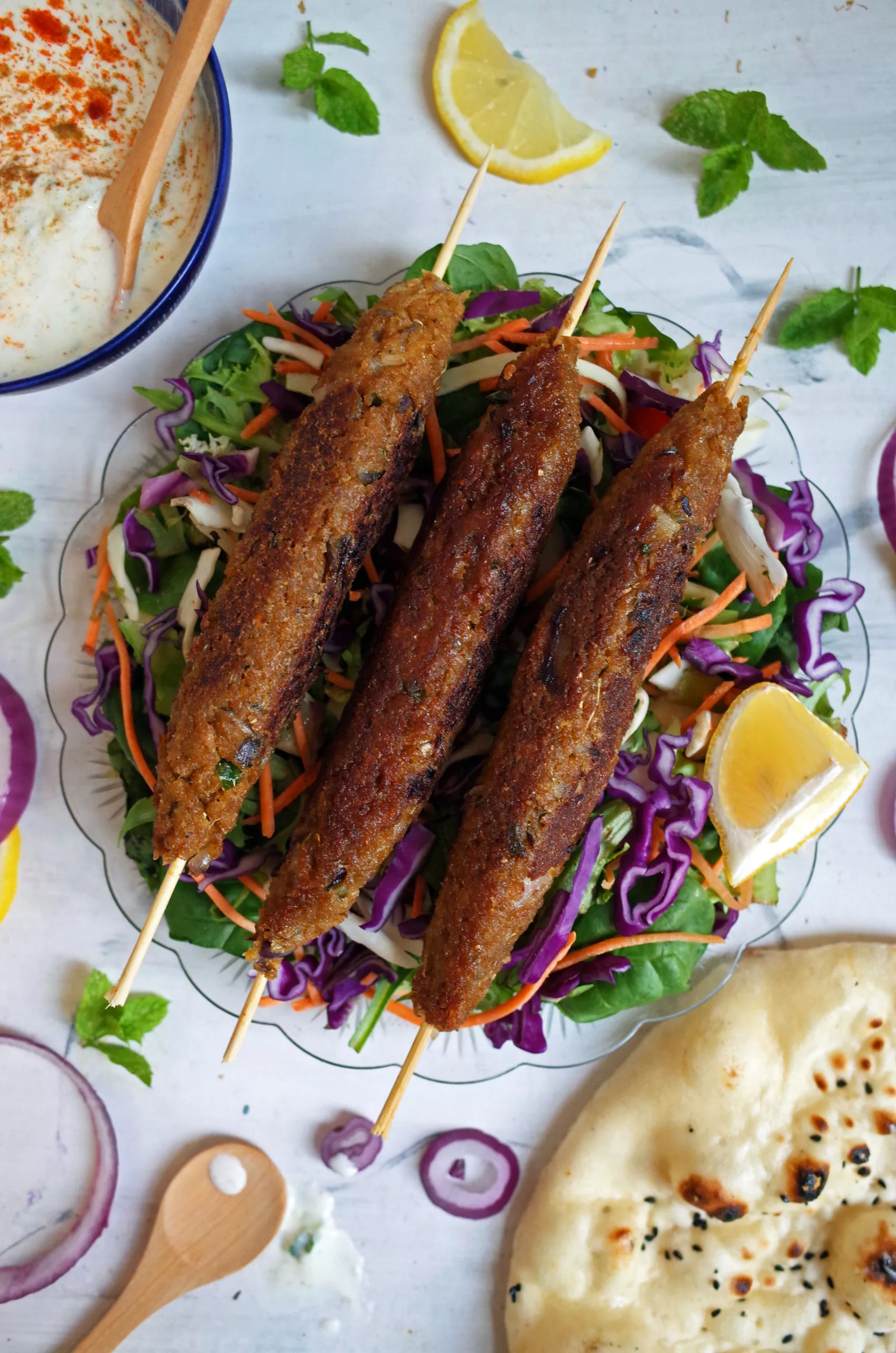
The idea for these Vegan seekh kebabs came about as I was thinking about making Hara Bhara Kebabs – a traditional Indian recipe for vegetarian kebabs made from green vegetables which will be featuring in my cookbook. Do you ever get a food craving that’s so bad you can’t get the food out of your head, and sometimes in really extreme cases you even end up having dreams about it? That’s what was happening with vegetarian kebabs! I knew I had to make them, but I wanted to try something a bit different and a bit more ‘meaty’. Soy chunks were the perfect solution – they’re cheap, offer great amounts of protein and best of all, are so delicious!
I’ll be real with you. The texture is not like the most common meat-based seekh kebabs – but in a good way. It’s much more similar to falafels in that they have a scrumptious crispy and crunchy exterior with a slightly crumbly, herby, and incredibly flavoursome inside. My partner, who is an occasional omnivore, even said that these seekh kebabs are packed with far more flavour than any meat-based ones he’s ever eaten.
The kebabs are seasoned with a tempting mix of spices from fresh-ground earthy coriander powder to the deep and smoky taste of garam masala. Roasted chickpea flour contributes a nutty aroma, with fresh mint and coriander tossed in and a flirtatious scattering of red onions to finish.
When served on a bed of salad cushioned on a homemade pillowy, soft and chewy naan … it really is perfection.
What dietary requirements are these Vegan Seekh Kebabs suitable for?
These kebabs are suitable for vegans and people with dairy and nut intolerances. It was important to me to make these kebabs not only meat-free but also dairy-free – so that as many people as possible can enjoy them!
The raita I served them with is not vegan or diary-free but can be adapted to be so by using coconut yoghurt instead of dairy yoghurt. Alternatively you can use other vegan-friendly chutneys such as coriander chutney, mint chutney, mango chutney, and hot chilli sauce or sweet chilli sauce instead.
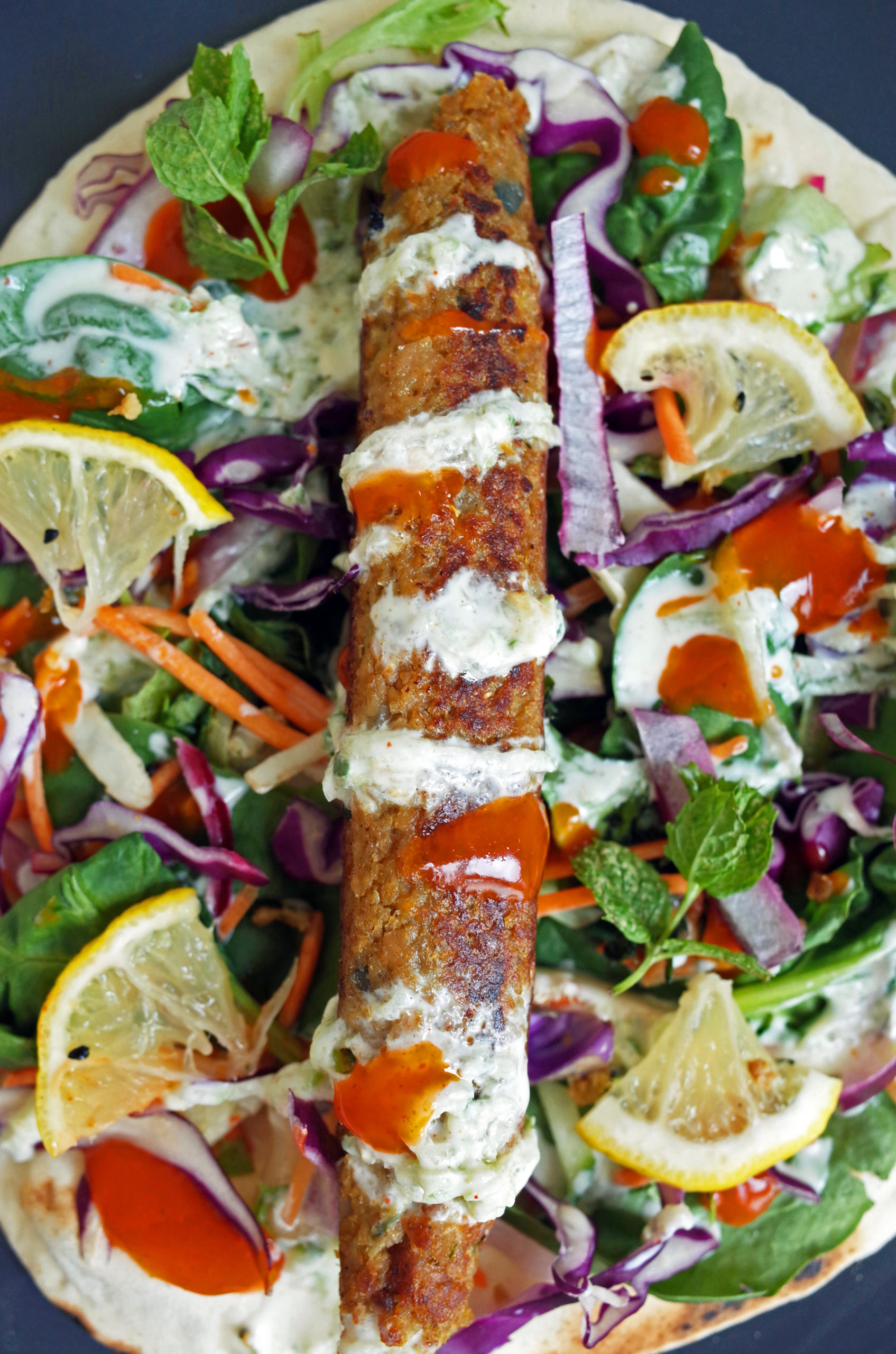
Let’s talk about Soy Chunks …
Soy chunks are a miracle ingredient! They are extremely popular in India with vegetarians and omnivores alike, and are often called ‘Meal Maker’ for how filling and divinely tasting they are – quite literally making any meal! They are made from soy-flour, and when bought will be very rough and dry to the touch. Before you cook with them you have to re-hydrate the chunks by soaking, at which point they will become soft and spongy – perfect for soaking up all the flavours of your recipe! They have a distinctive meaty taste and are perfect when used in this kebab recipe.
Not only do they taste delicious, but they are also extremely affordable. From a good Indian grocery store a large bag of soy chunks will only set you back less than £1 – and you can make so many meals from that one bag. If you don’t have access to an Indian grocery store they are also available on amazon for a slightly more expensive but none-the-less very reasonable price here (Please note that as an Amazon affiliate, I recieve a small commission from every purchase made through this link, at no extra cost to the buyer) The soy chunks last for absolutely ages so they are a great pantry staple to have when you’ve run out of fresh vegetables or want a quick and easy protein solution.
They are also extremely nutritious and an amazing source of protein. Consequently, each kebab has over 8g of protein, which is amazing! They are very low in undesirable fats and sugars, whilst offering necessary fibre, iron and calcium.
This recipe is:
- Packed full of protein from the soy chunks
- Extremely economical and inexpensive to make!
- Bursting with flavour
- Comes together in no-time
- Naturally vegan and nut-free!
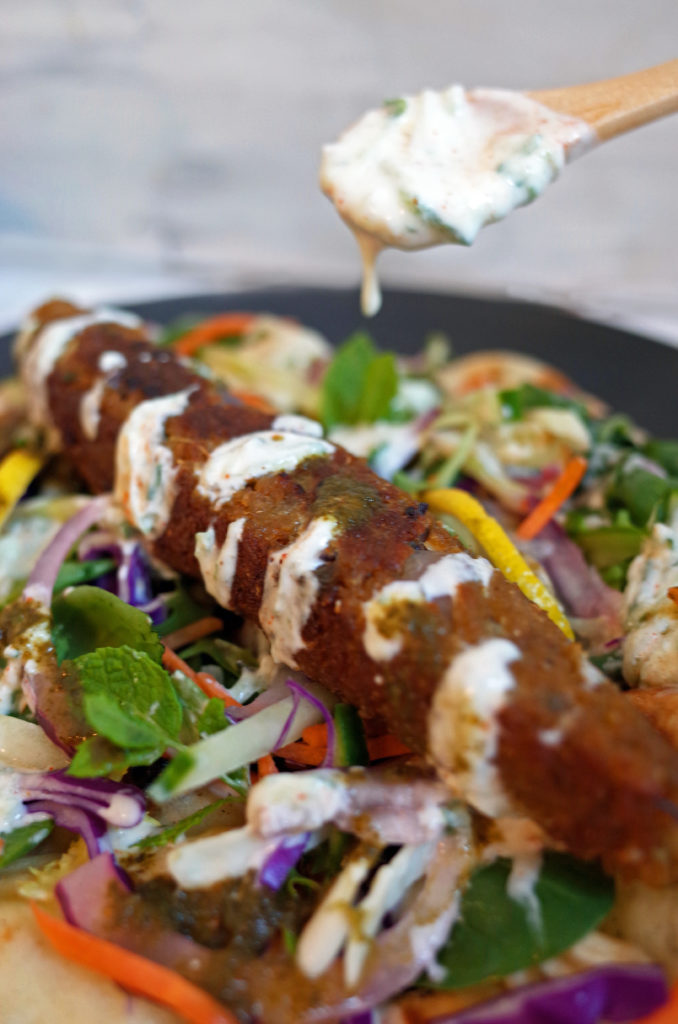
Help! My kebab mix is crumbling!
This kebab mix is more on the crumbly side than the sticky side. It does take some practice to stick it to the skewers, but I promise that if you persist you will get there. However, if it’s really not working for you, try boiling and mashing a small potato and then adding it to the mix. The potato will act as a neutral flavoured binder which will make the mix less crumbly and easier to stick to the kebab skewers.
How do you store Seekh Kebabs? Can you freeze them?
If you can’t eat all the kebabs at once, keep them in an air-tight container in the fridge and eat within 3 days.
Further, the kebabs freeze very well. Do freeze the cooked kebabs. On the other hand, the uncooked ones will be too fragile to store. Store in an air-tight container and freeze for up to 3 months. Reheat in an oven or frying pan as desired. We love having these available whenever we get a craving!
These Vegan Seekh Kebabs are also perfect to take for picnics – they taste great cold and the naan is substantial enough that it won’t get soggy. Just take a look at the gorgeousness that is the photo below!
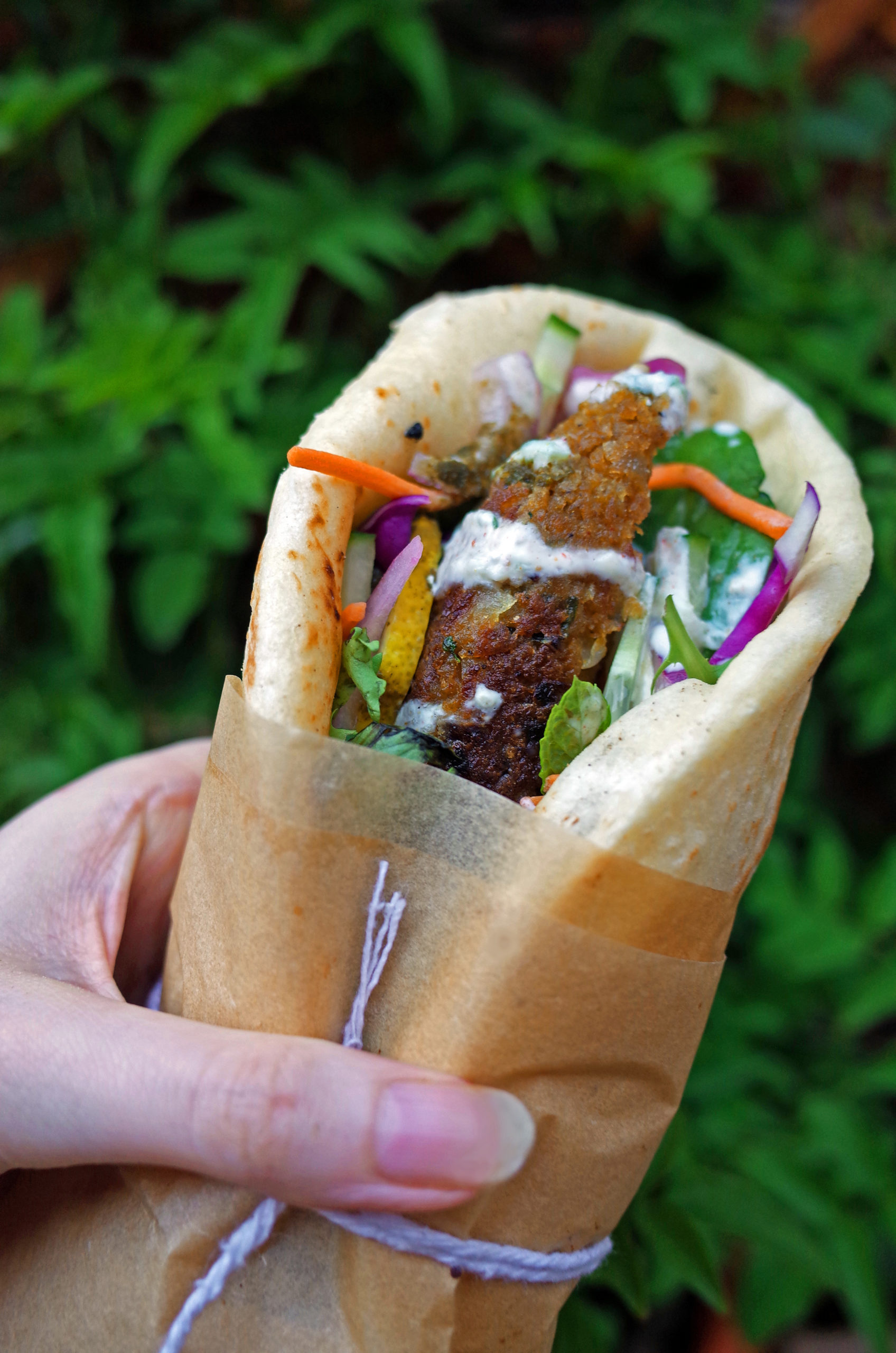
If you’re interested in more vegan Indian recipes, do check out this delicious Indo-Chinese spicy stir fry Chilli Tofu, a simple Cabbage & Greens Dry Curry, or classic Punjabi Vegetable Samosa. Okay, now without any further ado, onto the recipe …
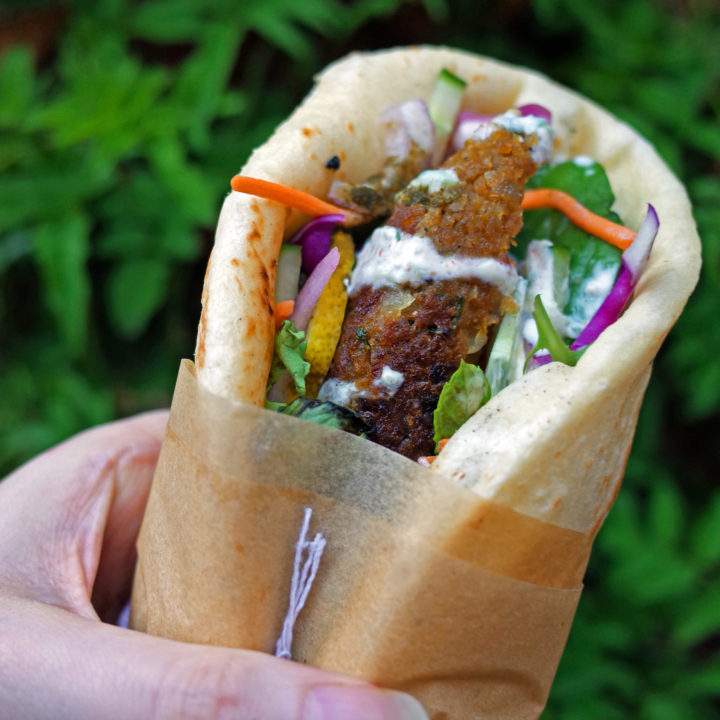
Vegan Seekh Kebabs made from Soya Chunks
Vegan Seekh Kebabs make from a great starter for Curry Night or a filling wrap. Easy to make and impressive.
Ingredients
- 150g Medium Soy Chunks
- 120ml Water (to soak soy chunks)
- 2 Thin Indian Green Chillis
- 80g Red Onion, very finely minced
- 1 tbsp Ginger-Garlic Paste
- 1.5 tsp Salt
- 3/4 tsp Coriander Powder
- 1/2 tsp Red Chilli Powder
- 1/4 tsp Turmeric Powder
- 1/2 tsp Cumin Powder
- 1/4 tsp Garam Masala
- 1/4 tsp Black Pepper Powder
- Few stems Fresh Coriander leaves, chopped
- Few stems Fresh Mint leaves, chopped
- 20g Gram Flour (Chickpea/Garbanzo Bean Flour)
- 40g Plain Flour
- 40g Breadcrumbs
- 3 tbsp Water
- Oil to taste, for frying the kebabs
Instructions
- Begin by preparing the soy chunks. Firstly, add the soy chunks to a large bowl along with 120ml of hot water. Cover them and leave to soak for around 20-30 minutes. Once they’ve thoroughly soaked, drain all the water from the bowl and using your hands, squeeze all the water out of the soy chunks. Once they’ve been squeezed of water, add to a large blender.
- Grind the soy chunks. Add the green chillis along with the soy chunks to your blender and pulse until both have completely broken down. The soy chunks should be extremely finely minced. You may have to do this in smaller batches if your grinder is small.
- Roast the chickpea flour. Add the chickpea flour to a small non-stick frying pan over very low heat. Roast it for around 5 minutes, or until fragrant. You don’t want to burn the flour, so do continuously stir it around the pan and keep an eye on it at all times. As soon as the flour becomes fragrant, turn off the heat and leave the flour to cool.
- Make the kebab mixture. Add the ground soy chunk and green chilli mixture to a really large bowl. To this bowl also add very finely chopped red onion, ginger-garlic paste, salt, coriander powder, red chilli powder, cumin powder, garam masala, black pepper, turmeric powder, and fresh coriander and mint. Mix well to ensure all the spice powders are equally distributed. At this point add the roasted chickpea flour, plain flour, breadcrumbs, and water. It’s time to get messy! Get in their with your hands and mix everything together nicely.
- Shape the kebabs. This bit can be a little tricky. The mixture is not firm and sticky, so it can crumble. I used bamboo skewers, but flat metal skewers will be beneficial here. Wet your hands (this helps), take some mixture, and shape it around the kebab, squeezing into place. This can take some practice so don’t give up. Repeat with all the kebabs.
- Cook the kebabs. Heat a large pan over medium flame. I used a large, flat, non-stick tawa – but you can use any pan which has room for the skewers. Carefully place the kebabs onto the pan and drizzle a little oil over them. Once one side gets golden-brown, carefully rotate. Cook this way until all sides are a lovely golden brown and then serve in your preferred way!
Recommended Products
As an Amazon Associate and member of other affiliate programs, I earn from qualifying purchases.
Nutrition Information:
Yield: 9 Serving Size: 1Amount Per Serving: Calories: 90Total Fat: 4gSaturated Fat: 1gTrans Fat: 0gUnsaturated Fat: 3gCholesterol: 5mgSodium: 468mgCarbohydrates: 10gFiber: 1gSugar: 1gProtein: 3g
Nutrition information isn’t always accurate.
How to Serve Vegan Seekh Kebabs?
The kebabs taste their best when served in freshly made naan alongside loads of crunchy salad and some delicious sauces. I served mine with homemade raita, a squeeze of lemon juice, coriander chutney and sweet chilli sauce. My partner was obsessed with how the sweet chilli sauce tasted with the kebabs so that’s definitely a combination that I highly recommend!
Other sauces which would taste amazing would be mango chutney, mint chutney (pudina chutney), sriracha sauce, tzatziki, or even garlic mayonnaise.
You can also serve the Vegan seekh kebabs as an appetiser to any Indian meal alongside your chutney of choice to dip into! Sprinkling chaat masala on top before eating really elevates the flavour as well.
If you want to use them in something other than a “classically Indian” meal, you can crumble the kebabs and add them on top of homemade pizza as a delicious protein packed topping. You can also use them as a burger patty – check out my other vegetarian burger recipe here!
As always, if you have any questions please leave them in the comments down below and I will get back to you as soon as possible. If you give this recipe a try I would love to know what you think. Please take a photo and tag @ohmyvegofficial on Instagram or send it to any of my personal media accounts!

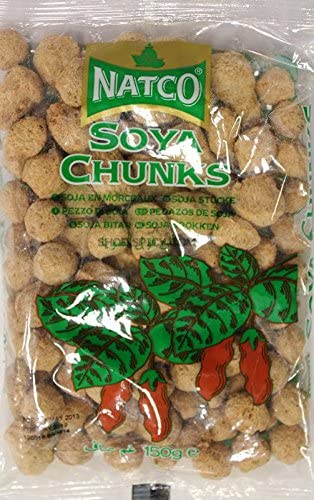

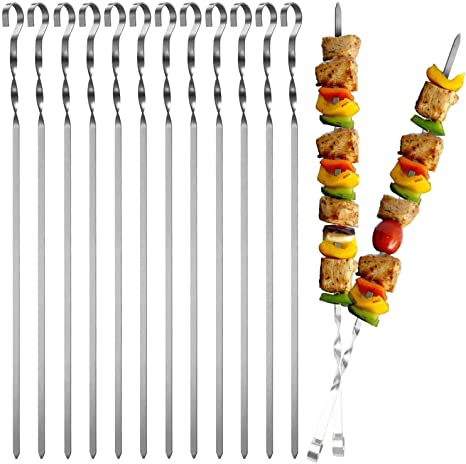
Hey Eleanor, this sounds delicious, can’t wait to make it.
Can you please tell me what plain flour is though? Is it whole wheat flour (aata) or refined flour (maida)?
Thank you so much!
Sorry the confusion. Plain flour is Maida. You can try using Atta, but I haven’t made it that way myself. You could also try using equal amounts of roasted Besan instead if you can’t get access to Maida!